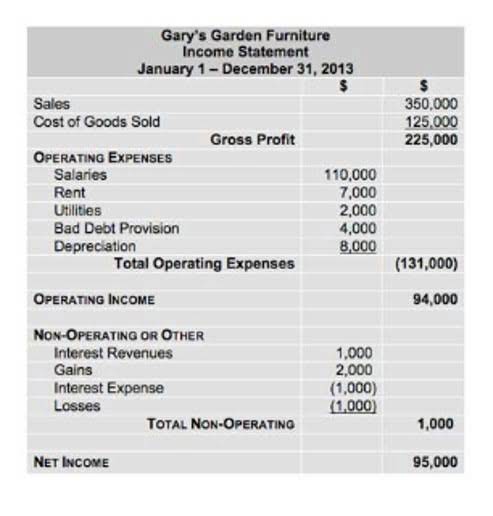
In this example, the employee is entitled to 10 hours of overtime pay for workweek #1, regardless of how many hours they work in workweek #2. Under the FLSA, any non-discretionary bonuses or commission earned by a nonexempt employee must be factored into their regular rate of pay. The calculation method varies depending on if the bonus or commission payment is allocated by the workweek or some other frequency, e.g., monthly, quarterly, annually. Employers with hourly wage earners need to know how to calculate overtime to ensure that they are paying employees the right amount and complying with the FLSA. It’s calculated by dividing the total pay for employment in any workweek (except statutory exclusions) by the total number of hours actually worked.
Bonuses or Commissions Covering More Than One Workweek
The shift differential rate is usually a percentage of the employee’s regular rate of pay and varies depending on the company and industry, while overtime rates are set at a minimum of 150% of regular pay. Nonexempt employees who are paid by day rate or piece rate must track hours worked each pay period, even if QuickBooks they are not paid any form of hourly rate. This amount should include both productive and nonproductive hours (like sitting and waiting for a truck to be unloaded) and is a federal requirement to ensure minimum wage is earned and overtime is calculated and paid correctly. Employers are required to pay at least the federal minimum wage ($7.25) for regular hours and any hours of overtime at a pay rate of one-and-a-half times the employee’s regular rate for any hours worked over 40 during a workweek.
How to calculate overtime pay in 7 steps examples + common mistakes
- For example, an employee who is paid biweekly will be paid for two separate 40-hour workweeks, and overtime will be calculated accordingly.
- For example, an hourly employee making $10 an hour and working 45 hours a week would be paid $10 for 40 hours and $15 an hour for each of the 5 hours of overtime.
- Certain states have their own overtime laws that may differ from federal regulations.
- In addition, under specified conditions, the FLSA allows the employer to calculate overtime pay based on one and one-half times the hourly rate in effect when the overtime work is performed.
- This amount of time includes only actual hours worked and excludes pay for time not worked such as vacation or sick leave.
- The general rule under the FLSA is that overtime compensation earned in a particular workweek must be paid on the regular payday for the period in which such workweek ends.
Employers should also be aware that the maximum tip credit differs by state. In the workplace, you’re either considered an “exempt” or a “non-exempt” employee based on your specific job duties. Only non-exempt employees are eligible for overtime pay according to the FLSA. Special treatment is afforded hospital and residential care employers, allowing them to substitute a 14-day period for the “workweek” concept for purposes of calculating overtime. Under this system, the employee is entitled to overtime for all hours worked in excess of eight hours in any workday and in excess of 80 hours in such 14-day period. Three conditions must be met before a hospital or residential care employer can qualify for this exemption.

How To Calculate Overtime Pay
When in a single workweek an employee works at two or more different types of work for which different straight-time rates have been established, the regular rate for that week is the weighted average of the rates. In addition, under specified conditions, the FLSA allows the employer to calculate overtime pay based on one and one-half times the hourly rate in effect when the overtime work is performed. Calculating overtime pay is usually easiest with hourly employees who have a single rate of pay and no additional compensation. Following FLSA rules, multiply the regular rate of pay by 1.5 and multiply the result by the total number of overtime hours worked. The overtime pay formula is the employee’s regular pay rate times 1.5 times the number of overtime hours. For example, for an employee with a regular pay rate of $25 an hour, their overtime pay rate is $37.50 an hour ($25 x 1.5).
How to Calculate Overtime Pay Under the FLSA

To be exempt as an HCE, an employee must also receive at least the new standard salary amount of $844 per week on a salary or fee basis (without regard to the payment of Interior Design Bookkeeping non-discretionary bonuses and incentive payments). New overtime rules require that salaried employees making less than a specific amount qualify for, and must be paid for, overtime. The new rule has a higher salary level for exemption from overtime than the previous rule; that is, more employees qualify for overtime.

Employees exempt from overtime

An employee’s regular rate includes their hourly rate as well as the value of nondiscretionary bonuses, shift differentials, and certain other forms of compensation. Therefore, if the employee receives these other types of compensation, you must factor them in when determining their regular rate of pay. Overtime pay is the additional pay an employee receives for working beyond their regular hours in a work week, usually beyond 40 hours. This additional pay is typically calculated as one and a half times the employee’s regular pay rate.
Calculating overtime for employees with nondiscretionary bonuses or shift differentials
Keep in mind that states’ minimum wages may be greater than the federal minimum. Overtime refers to any extra hours that you work outside of your scheduled workweek. Because this extra time is not included in your normal working hours, non-exempt employees are entitled to receive additional compensation for this work. Double time is another method of calculating overtime pay, but it is less common than time and a half. Using this method, employees receive double their regular hourly rate for every hour worked over a certain number of hours in a workday or workweek (usually 40 hours). All time worked up to the maximum should be paid at the employee’s regular pay, and any how much is overtime pay time worked beyond the maximum should be paid at 1.5 the regular rate.